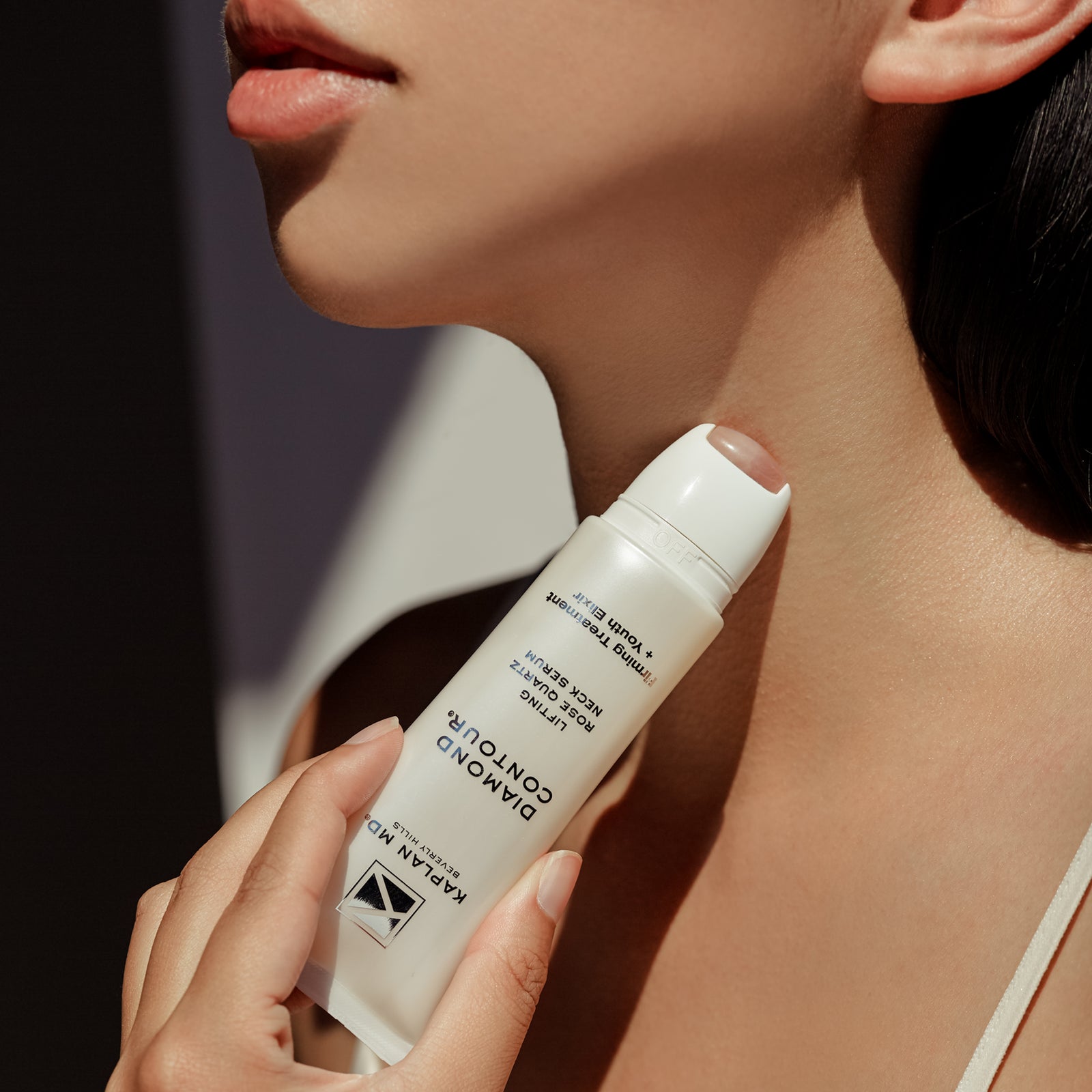Dr. Kaplan – Psoriasis
WHAT CAUSES PSORIASIS?
Research shows that the person’s immune system plays an important role. It seems that the immune system mistakenly activates a type of white blood cell called a T cell. Once activated, the T cells trigger a reaction, causing the skin cell to grow too quickly. New skin cells form in days rather than weeks. The body does not shed these skin cells, so the cells pile up on the surface of the skin. The result is psoriasis.Despite its appearance, psoriasis is not contagious. People who get psoriasis tend to have a blood relative who has psoriasis, indicating that to get psoriasis a person must have the gens for psoriasis. Scientists have learned that not everyone who inherits genes for psoriasis gets psoriasis. For psoriasis to appear, it seems that a person must inherit the right mix of genes and be exposed to a trigger.
WHAT TRIGGERS PSORIASIS?
Different people have different triggers. Common triggers include stress, strep throat, and winter weather. Many people see their psoriasis flare during the winter or a particularly stressful time. A scratch or bad sunburn can trigger psoriasis. For some people, psoriasis flares about 10 to 14 days after they injure the skin. Some medications can trigger psoriasis, including lithium, some drugs taken to lower blood pressure, and some medication taken to prevent malaria.
WHAT ARE THE TYPES OF PSORIASIS?
Plaque Psoriasis
About 80% of people living with psoriasis have plaque psoriasis. This type causes patches of raised, reddish skin covered by silvery white scale. Patches frequently form on the elbows, knees, and lower back, but can occur anywhere on the skin.
Scalp Psoriasis
Identical in appearance to plaque psoriasis on the body; it is characterized by silvery white scales and reddish patches. Scalp psoriasis also tends to be very itchy. Because patients often cannot help scratching and the scales fall onto a patient’s clothing, scalp psoriasis can be misdiagnosed as dandruff. Even with the right diagnosis, scalp psoriasis can be difficult to control.
Nail Psoriasis
Psoriasis can affect the fingernails and toenails. One sign of this is tiny pits in the nails. As the psoriasis worsens, the nails may loosen, thicken, and eventually crumble. Sometimes nail psoriasis is misdiagnosed as a nail infection.
Guttate Psoriasis
This type usually occurs in children and young adults, causing small, red spots on the skin. It often appears after a sore throat and frequently clears up by itself in weeks or a few months. Many people never have psoriasis again. If a person already has plaque psoriasis and guttate psoriasis develops, it often means the psoriasis is worsening.
Pustular Psoriasis
Usually appearing on the palms and soles, this type of psoriasis looks like white pus-filled bumps surrounded by red skin. Pustular psoriasis also can develop all over the body. This causes a severe and sometimes life-threatening psoriasis that dermatologists call generalized pustular psoriasis.
Inverse Psoriasis
Smooth, red patches in the folds of the skin, including the armpit, under the breasts, in the crease of the buttocks, and in the genital area. It can be painful.
Erythrodermic Psoriasis
The least common, this type causes severe redness and shedding of the skin over a large portion of the body. The skin looks as if it has been burned. There is often severe itching and pain. Erythrodermic psoriasis can be life threatening.
WHAT IS PSORIATIC ARTHRITIS?
Some people who have psoriasis develop a type of arthritis called psoriatic arthritis. The first sign is frequently swollen, stiff, and sometimes painful joints when waking up. If this happens,k tell a dermatologist right away.Like psoriasis, psoriatic arthritis is a lifelong condition. If psoriatic arthritis worsens, the affected joints can deteriorate. Medication can help prevent this. This is why it is so important to tell a dermatologist about joint problems.
HOW IS PSORIASIS DIAGNOSED?
Dermatologists diagnose psoriasis by examining the patient’s skin, nails, and scalp. To find out if anything else may have developed such as an infection, a dermatologist may perform a biopsy. To perform a biopsy, a dermatologist removes a small bit of skin or nail. This procedure can be safely performed during an office visit.
HOW IS PSORIASIS TREATED?
While there is no cure for psoriasis, treatment can help control psoriasis. Because psoriasis can be stubborn, gaining control may require trying different types of treatment and several appointments with a dermatologist. Some patients receive more than one type of treatment. For example, a patient may receive light therapy and medication. When psoriasis requires strong medicine, using more than one treatment often produces the best results and causes fewer side effects.The following describes the different treatments that the U.S. Food and Drug Administration (FDA) has approved for psoriasis.
TOPICAL MEDICINE
Topical medicine is applied to the skin. These medicines help control mild to moderate psoriasis.
Corticosteroids (Cortisone)
The most frequently prescribed medication for treating mild to moderate psoriasis. It is available as a cream, ointment, gel, foam, spray, and lotion. Some corticosteroids are very strong and are used for short periods. These help clear the skin. Others are mild and can be used for longer periods to keep psoriasis under control. No matter which type is prescribed, it is important to follow the dermatologist’s instructions. Side effects can occur when instructions are not followed. For example, applying the medication every day and then suddenly stopping can cause a serious psoriasis flare. If this happens, stronger medication may be needed to control the psoriasis.
Anthralin
This medication is often used to treat thick patches of psoriasis. In the past, many patients disliked using it because anthralin would irritate and stain the skin. With newer formulas and new ways to use this medication, these problems rarely occur.
Cacipotriene and Calcipotriol (Vitamin D3 Preparations)
Many patients use this medication along with a corticosteroid. Using both medications as prescribed can be very helpful. To avoid side effects such as irritated skin, always use the medication as directed.
Retinoids (Vitamin A preparations)
Some patients find that applying this medication to their psoriasis is enough to control the psoriasis. For patients who need a bit more help, a dermatologist may prescribe a topical corticosteroid. Women should not use a retinoid if they are pregnant.
Coal Tar
For more than 100 years, coal tar has been used to safely and effectively treat psoriasis. Many patients dislike this treatment because it was messy and had an awful odor. Newer products are much better.
LIGHT THERAPY
Under a dermatologist’s care, light therapy can provide safe and effective treatment for many patients with psoriasis. Because too much ultravoilet (UV) light can make psoriasis worse, it is important to see a dermatologist for treatment. Never try to self-treat by using a tanning bed or sunbathing.Before prescribing light therapy, a dermatologist will meet with a patient. Light therapy is not for everyone. Some patients’ skin is too sensitive. Some patients cannot spare the time that light therapy requires. Several treatments are required. The patient must go to a dermatologist’s office, psoriasis center, or hospital for the treatments. If light therapy is appropriate for a patient, the dermatologist may prescribe one of the following:
Laser Therapy
A laser can target the psoriasis and not touch the surrounding skin. Because the light treats only the psoriasis, a strong dose of light can be used. This offers many people an effective way to treat a stubborn patch of psoriasis, such as on the scalp, feet, or hands. A laser is not the right treatment for large areas.
Ultraviolet B (UVB) Light
To receive this therapy, a patient stands in a light box or in front of a light panel. If the psoriasis responds, about 24 treatments over a 2-month period should clear the psoriasis. Although UVB is safe and effective, it does have possible side effects. These include burns, freckling, and premature skin aging. A patient’s risk of skin cancer appears to be about the same as a lifetime of going out in the sun without sun protection. The dermatologist and the patient will weigh the risks, and dermatologists will closely monitor their patients for skin cancer.
PUVA
Dermatologists prescribe PUVA when psoriasis does not respond to other treatments. This treatment combines a medication called psoralen with UVA light therapy. Psoralen increases a person’s sensitivity to UVA light. The patient may be asked to apply psoralen to the skin or take a pill containing psolaren. After a certain amount of passes, the patient enters a UVA light box. Research shows that PUVA is effective in about 85% of cases.
Goeckerman Therapy or Ingram Regimen
These combine topical therapy with UV light treatment. This combination can be very effective in treating severe psoriasis. There are disadvantages. Neither is widely available in the U.S. Both require intensive treatment for several hours a day in a psoriasis clinic or hospital. Most patients receive treatment 5 days a week for 3, 4, or 5 weeks.
When light therapy is effective, some patients may receive a prescription for a home UV unit. These patients are carefully monitored and must see a dermatologist for skin checkups.
SYSTEMIC MEDICINE
Systemic medicine works throughout the body. These medications are used to treat moderate to severe psoriasis:
Methotrexate
This medication has been used for years to treat moderate to severe psoriasis. It continues to be one of the most effective treatment for patients with erythrodermic psoriasis or pustular psoriasis. Patients taking methotrexate must be carefully monitored with regular blood tests for side effects. Sometimes a chest x-ray or liver biopsy may be necessary.
Pregnant women must not take methotrexate. If a woman wants to become pregnant, she should not take methotrexate for at least 12 weeks before becoming pregnant. Men who are trying to get a woman pregnant also should not take methotrexate for at least 12 weeks.
If a patient drinks alcohol, is is important to tell the dermatologist before taking methotrexate. Methotrexate can cause serious side effects in people who drink alcohol regularly.
Retinoids (Vitamin A Derivatives)
Patients with moderate to severe psoriasis may be able to control their psoriasis by taking retinoid pills and getting light therapy. These retinoid pills are not the same as vitamin A pills available without a prescription.
Patients taking retinoid pills require careful monitoring. Regular blood tests are necessary. Some patients develop high cholesterol from these pills. Retinoid pills can cause other side effects, including dry skin, lips, and eyes.
Pregnant women should not take this medication. Retinoid pills can cause birth defects. If a woman wants to get pregnant, she should stop taking retinoid pills for 3 years before trying to get pregnant.
Cyclosporine
This medication suppresses the immune system, which makes it an effective psoriasis treatment. While effective, cyclosporine is usually only prescribed for severe psoriasis that has not responded to other treatments. Most patients take cyclosporine for a short time, usually 3 to 6 months. Before a dermatologist prescribes cyclosporine, a patient must have a blood test and a blood pressure check. Due to possible side effects, patients require regular blood tests and blood pressure checks.
BIOLOGICS
For patients with moderate to severe psoriasis, a biologic may be a treatment option. The FDA approved the first biologic for psoriasis in 2003. Today, dermatologists have a choice of biologics that can be used to treat psoriasis.A few of the biologics have been approved to treat psoriatic arthritis. Research shows that these biologics may slow or even stop joint damage. This is a significant medical advance. Before the biologics, people with psoriatic arthritis could take medication to alleviate the pain and swelling, but could not prevent the damage. It may now be possible to prevent the lifelong disability that psoriatic arthritis can cause.
All content solely developed by the American Academy of Dermatology.








